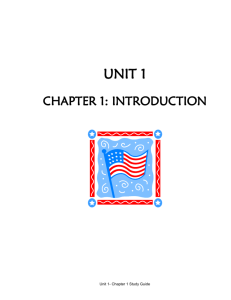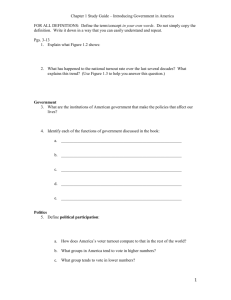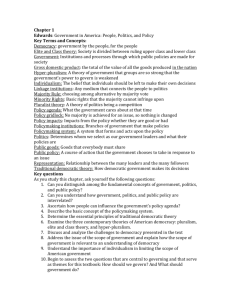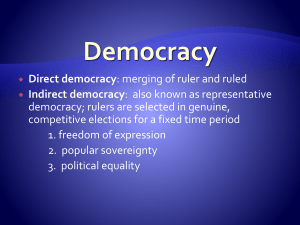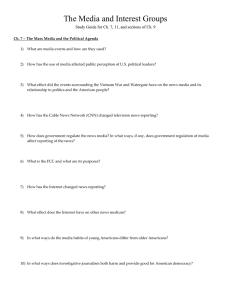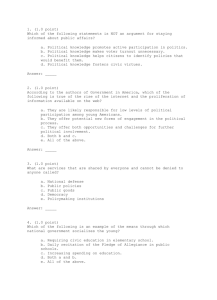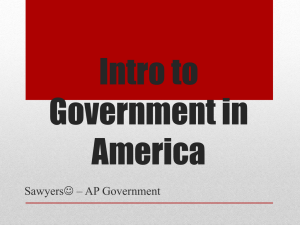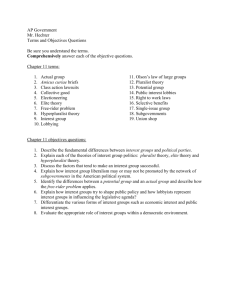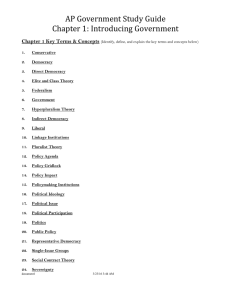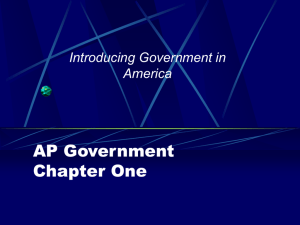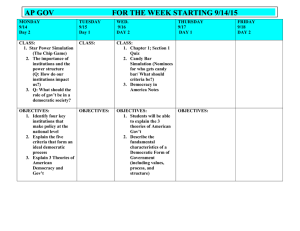Pluralist - santamonicasocialstudies
advertisement
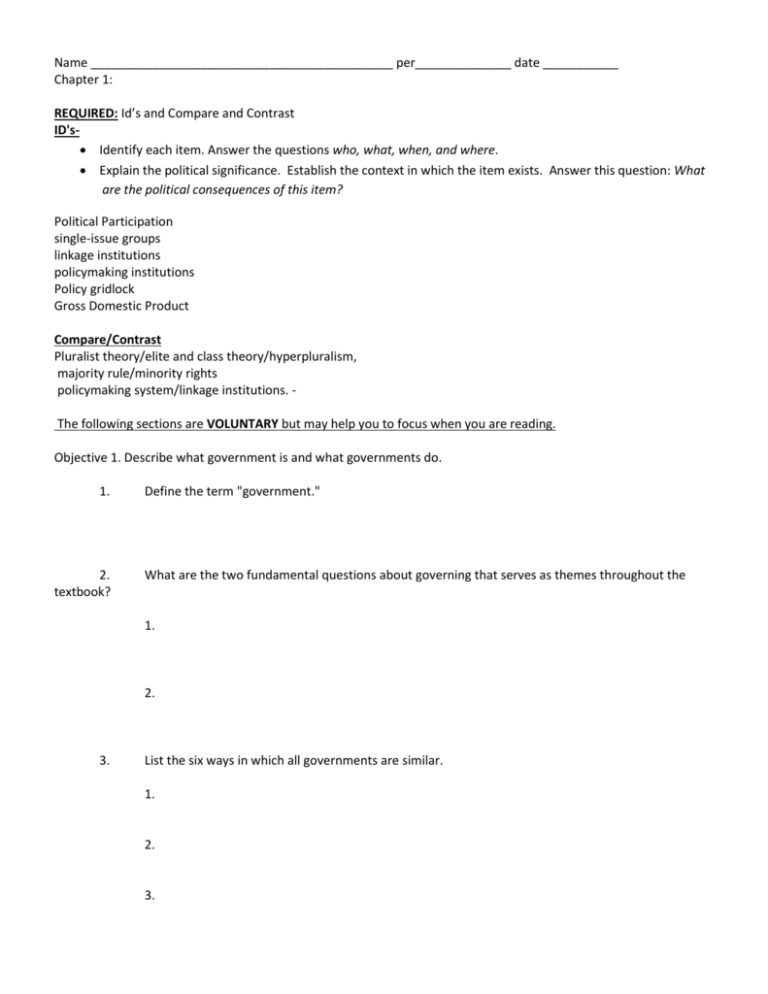
Name ____________________________________________ per______________ date ___________ Chapter 1: REQUIRED: Id’s and Compare and Contrast ID's Identify each item. Answer the questions who, what, when, and where. Explain the political significance. Establish the context in which the item exists. Answer this question: What are the political consequences of this item? Political Participation single-issue groups linkage institutions policymaking institutions Policy gridlock Gross Domestic Product Compare/Contrast Pluralist theory/elite and class theory/hyperpluralism, majority rule/minority rights policymaking system/linkage institutions. The following sections are VOLUNTARY but may help you to focus when you are reading. Objective 1. Describe what government is and what governments do. 1. 2. textbook? Define the term "government." What are the two fundamental questions about governing that serves as themes throughout the 1. 2. 3. List the six ways in which all governments are similar. 1. 2. 3. 4. 5. 6. Objective 2. Understand that politics is the struggle over "who gets what, when, and how." 1. Define the term "politics." 2. Give examples of the "who," "what," "when," and "how" of politics. Objective 3. Identify the important features of the policy system and explain how public policies are the choices that government makes, and declines to makes, in response to political issues. 1. Draw a diagram of how a policy system works. 2. List the four key linkage institutions in a democratic society. 1. 2. 3. 4. 3. Define the term "policy agenda." 4. How does a government's policy agenda change? 5. List the four major policymaking institutions in the United States. 1. 2. 3. 4. 6. Define the term "policy impacts." Objective 4. Understand the nature of democratic governments, traditional democratic theory, and the key questions concerning democracy. 1. Define the term "democracy" as used in this text. 2. List the five cornerstones of an ideal democracy. 1. 2. 3. 4. 5. 3. Explain what is meant by majority rule and minority rights. Objective 5. Distinguish between the three contemporary theories of American democracy and politics (pluralist, elite and class, and hyperpluralist) and identify some of their strengths and weaknesses. 1. Complete the following table comparing pluralist, elite and class, and hyperpluralist theories according to who holds the power and how policy is made. Theory Who Holds Power How Policy is Made Pluralist Elite and Class Hyperpluralism 2. List the major challenges facing American democracy. 1. 2. 3. 4. Objective 6. Understand the nature of the scope of government in American and the key questions concerning the scope of government. 1. Make a list of items that illustrate the scope of American government. 2. How does the scope of American government compare to the scope of the government in other countries? 3. How has American individualism affected the scope of government?
